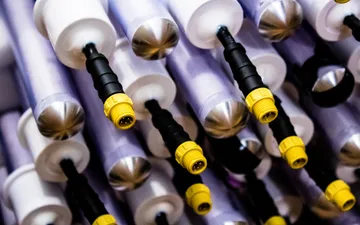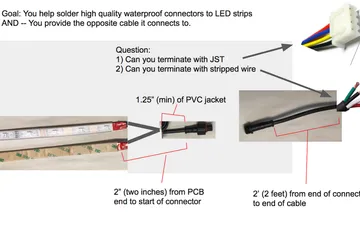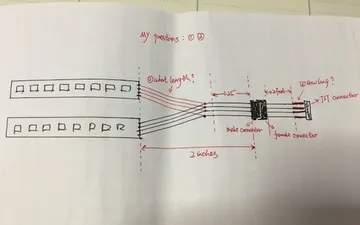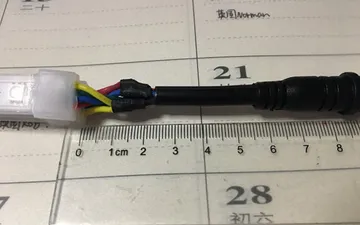Low Volume Sourcing Techniques

Justin Sinichko, Former Hardware Developer
Article Categories:
Posted on
A few practical tips for finding and vetting vendors for low-volume manufacturing
Low volume manufacturing can be a logistical nightmare. You might think that vendors who could help you simply won’t because you don’t represent a significant quantity of work. You might also think that you’re doing something incredibly brainy and only YOU can tackle the challenge and ensure quality. To a degree both of these are valuable and tempering thoughts. But what these thoughts often mean is that you’ve started to think about sourcing towards the tail-end of a project. These thoughts actually represent a totalitarian go-it-alone-until-it’s-perfect-in-my-eyes approach which is consequently 100% ignorant of vendor capabilities and appetite.
The reality, as i’ve seen it, is that strong vendor relationships underpin success. I look at manufacturing sprints as crucial to the design and engineering process, even, if for no other reason, it gets me or another engineer on a real phone with a real person talking about real tangible things. It helps get my head out of the clouds and it helps to build real relationships. At the end of the day shipping hardware requires many hands no matter how much is automated. The stronger those relationships are the more the manufactured solution will represent the most appropriate solution.
Here are some practicals tips for finding the right vendor and working together:

Make your list
Figure out what you need and when you need it by. Then, identify those components with strict manufacturing tolerances and separate those from the ones that don’t. Finally, take note of similar items that can likely be sourced from one vendor. I typically create a large spreadsheet with rows for every PO I intend to issue and columns for vendor name, quoted price, and other relevant information. This becomes my shopping list and running budget sheet. The one we ran for the interactive Lightwalk project was over 150 POs long.
Vet with samples
Many vendors have great manufacturing chops they want to put to good use. The trick is breaking through the bureaucracy of sales that hides those great talents. The best trick i’ve found is to start by issuing a PO for samples during the very first conversation with a prospective vendor. This allows me to evaluate tangible samples early, and often also connect directly with a manufacturing manager or engineer. From those early conversations we’re able to explore tangential services, discuss tolerances, negotiate pricing, and ultimately build a relationship that wasn’t dragged through a long sales process. Instead, it was built up on mutual interest and aligned strengths while referencing a real PO.
Usually I’ll start with an introductory email that reads something like this:
Hello,
We are manufacturing ___. We will utilize roughly ___ units of ___ with ___ customizations. Can you please provide me an invoice for: ____ samples at your soonest convenience? We will be evaluating on quality and comparing a number of vendors with similar components.
My email is: ___
My phone number is ___
Our company tax id is ___
Our Fedex account number is ___
Our delivery address is ___
[If domestic] We can process payment for samples over the phone via credit card.
[If overseas] We can process payment for samples via Paypal. Please provide the payment email address.
Get on the same page
After finding a vendor i’m excited to work with I’ll quickly transition into a nitty-gritty discussion around the component or sub-assembly itself. I’ll prepare relevant documentation that outlines exactly what is needed as well as firm delivery date expectations. Those expectations are always buffered when time allows. Next, i’ll provide batch delivery dates spaced a week or two apart. Even for quick-turn projects it’s unreasonable to expect to jump to the head of the queue and completely dominate a vendor’s machine or manufacturing line. This encourages a vendor to give me some time on a machine early on. This actually allows me to further evaluate production quality parts and maybe even get started on larger assemblies which incorporate those parts. Finally, batch delivery dates also temper our own delivery expectations to be more reasonable so their manufacturing manager can more appropriately fit us into their schedule.
Once we’re on the manufacturing schedule we’ll often receive word that we missed something during our initial conversations that needs clarified before they can get started. That means we’re in the queue and an engineer is waiting on us. At these times a quick sketch at 2:30 AM is often better than revising detailed schematics that could take a day or two to turn around. We’ve taken this to some extremes with great results.
2:30 AM - We realize our timeline is still too tight and ask if vendor may be able to also source and solder low-voltage connector and mating sub-assembly.

5:30 AM - Vendor re-articulates goal.

Next day - Vendor produces a photo of their produced sample.

Payment
As a rule of thumb I think it is wise to pay invoices quickly. Vendors are not interested in floating large sums for Net 30+ terms. Instead I like to offer better terms (when I can) in exchange for some peace of mind. Here are some levers you can throw for processing payments quickly while you are working with new vendors and time is of the essence:
- Offer to buy more at a lower price - helps the sales manager look better.
- Offer to pay a greater percent down and the remainder on receipt of delivery - cash shows commitment
- Use credit cards for small domestic purchases and paypal for international purchases - a small buffer against fraud
- Offer to pay all transaction fees for samples - avoids getting hung up on small things for small quantities
- Offer wire transfers ONLY when you are working with a trusted vendor - better transaction fees
Taking Delivery
Most vendors will have a dedicated shipping department that pack, ship, and track your packages. For international shipments it is also important to communicate relevant tax and duty information so customs forms can be filled out correctly and be included with the shipment. Thankfully both Fedex and DHL both have great import teams that help bring in shipments snagged in customs. We’ve hit a few snags that could have been completely avoided with a little bit of coordination prior to shipment. One bulk-tracking service I use is named Aftership. This service updates the status of your packages regularly and includes a mobile application which is particularly useful for alerting you of any issues.
Share Back
Most of the vendors we work with will never see the fruits of their labor incorporated into larger assemblies. Whenever possible I like to share back our work, our videos, and even the nitty-gritty how-it-was-made content so they have a better sense for how their deliverables were used. This paves the way for future projects and creates some space for critique with the aim of improving future deliverables. Ultimately working with vendors is about building relationships that are mutually beneficial and persist beyond one engagement.